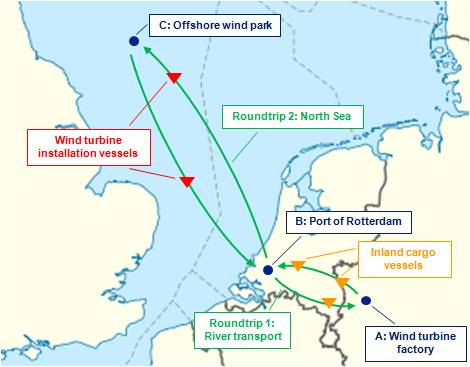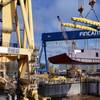Logistical Scenario Analysis for Hydrodynamic Applications
To calculate the operability of the whole logistics chain, rather than only individual operations, MARIN has developed the hydrodynamic scenario analysis program ScenSim.
The uptime, or operability, of a specific operation can be calculated with existing methods and tools in different ways. However, each specific operation is often just a small stage in a long chain.
When planning an operation a key parameter is to know the efficiency and duration of the operation. When the operation is a continuous process, such as the iterative transport of cargo between locations, or when the operation consists of a successive series of operations, such as installing an offshore wind park, variations in weather and the availability of cargo can impact the operation. The varying nature of these ‘disturbances’ and the effect they have on the complete logistical chain make it difficult to determine the efficiency or duration of the whole operation. To support developers, planners and engineers to determine the efficiency of a logistical chain from a hydrodynamic point of view, MARIN developed ScenSim.
The program simulates the logistics of shipping and offshore operations by combining MARIN’s existing hydrodynamic programs into a logistic scenario. A scenario can consist of multiple vessels, locations and iterations interacting with each other.
ScenSim is based on a time step approach. Initially the operability of each vessel is calculated at every time step, then the interactions between vessels, cargo and locations are determined and finally the status of each object is updated. At the end time of the simulation the program shows how much cargo was handled and transported during the whole simulation and the total time required to perform the whole scenario.
The scenario analysis program facilitates the simulation of the complete logistical chain from a hydrodynamic point of view. ScenSim can be used to indicate bottlenecks in the logistical chain so these can be eliminated, thereby increasing uptime and improving the overall efficiency.
The Author
Jorrit-Jan Serraris is senior project manager at the Offshore Department of MARIN, the Maritime Research Institute Netherlands.
e: [email protected]
(As published in the August 2014 edition of Maritime Reporter & Engineering News - http://magazines.marinelink.com/Magazines/MaritimeReporter)




















